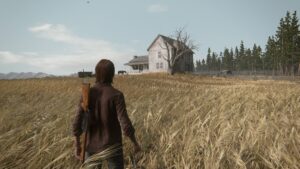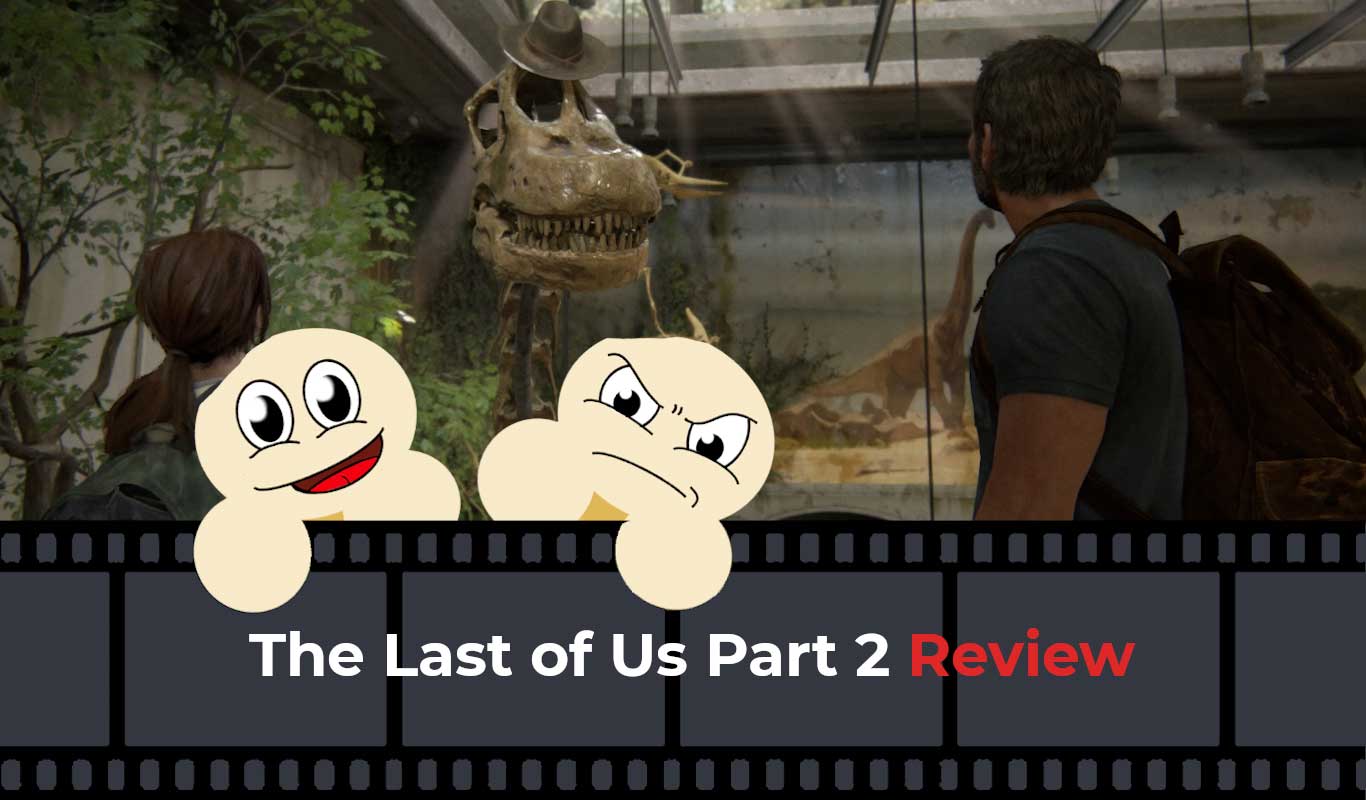This review contains minor spoilers for The Last of Us Part 2.
May your survival be long…
Introduction
The Last of Us was a legendary game from the previous decade which pushed the boundaries of the PS3’s hardware along with narrative storytelling in video games to produce Naughty Dog’s magnum opus. Now we stand at the end of another console generation, with The Last of Us Part 2, and for all its faults, it is still an excellent game. The developers at Naughty Dog put their heart and soul into developing this game, as they were forced to go into crunch time, working 12 hours a day, including weekends, to complete it. While I am appalled of the methods, I do respect the product that came out of them. I should also mention that just because I like a game it does not mean I am not going to beat it like an egg omelette.
Setting and Plot
The Last of Us takes place in a world ravaged by a fungus mutating everyone into zombie-like monsters dubbed by survivors as the infected. The plot of The Last of Us Part 2 takes place four years after the events of the first game. Joel and Ellie now reside in the peaceful town of Jackson. However, this happy ever after is shattered when a group of militiamen from Seattle enters Jackson to stir up trouble, prompting Ellie to ride to Seattle on a search and destroy mission with her girlfriend, Dina.
Neil Druckmann has created a memorable and even controversial narrative with this game, pushing the elements of love and vengeance to critical levels in this grimdark world. While the first game won our hearts, this one wants to challenge them.
The Last of Us Part 2’s biggest issue is that as a game, it tries to act like a mature dark movie, but the presence of its fun gameplay creates a sort of paradox. The game’s lesson that vengeance and violence are inherently wrong gets negated when your protagonist can slaughter everyone in the room with the same efficiency as the Terminator. This contradiction does this story-focused game no favours and makes it harder for me to sympathise with Ellie.

Characters and Performances
In this game, Ellie takes the helm as the lead protagonist in this story, but she is not the only playable character. Newcomer Abby will also be sharing some screentime playing through events from her perspective. While I adored both storylines, Abby’s shoehorned section did feel like it initially ruined the pacing of the narrative.
Veteran voice actors Troy Baker and Ashley Johnson take reprise their roles of Joel Miller and Ellie, respectively. I commend Ashley Johnson for her portrayal of Ellie in this sequel. Her performance provides so much weight that you want to help this person as they go through their warped Hero’s Journey.
As the narrative drags on, one begins to notice a change in Ellie’s character as she becomes more obsessed with her mission. Thankfully the supporting cast of Dina (Shannon Woodward) and Jesse (Stephen Chang) do their best to mellow her out when they are around.
Troy Baker’s Joel leans closer to the image of mentor and father figure we so wanted to see from the previous game. Some of the game’s most memorable moments are the quiet ones between the two characters.
Abby, portrayed by Laura Bailey, is a muscular militiawoman who can crush infected heads with her fists. Her story is distinct, in that it is one of redemption and self-discovery. Abby’s adventure revolves around aiding two young siblings in their escape from an oppressive cult. In a game filled with very morally grey characters, Abby’s ideals did make her feel the closest thing to a hero in the narrative.
Abby’s section does start slow to flesh out the new cast but quickly picks up its momentum, culminating in some of the best action sequences in the franchise. Of the new cast members, I particularly enjoyed Manny, portrayed by Alejandro Edda, who balances out the sombre mood with some much-needed comic relief.
While this game does have a decently large cast, I felt that most of these characters exist to be expendable. It is sad as the game could have built up more memorable moments of camaraderie with these characters.
Gameplay
Mechanics
The Last of Us Part 2 retains all of the core mechanics from the previous game, with the inclusion of being able to go prone and to jump between ledges. Both Ellie and Abby can also use ropes to climb and swing between areas. These new controls add a whole new dimension to movement, as I am able ambush enemies with a lot more ease.
The Last of Us Part 2 keeps the listen mechanic from the first game to help track enemy locations, and whenever the player has been noticed by something hostile, the game would produce a rumbling sound showing that something is on to them.
The further I got into the game, the more often I found myself using the prone mechanic. The scarcity of ammunition was the culprit, and whenever I heard the game’s signature rumble that someone is on to me, I would duck for cover faster than a shopkeeper on Black Friday.
Another mechanic introduced into the game is the ability to fight and dodge enemy attacks. For the most part, I rarely used the dodge mechanics with Ellie unless I happened to have stumbled across a decent melee weapon. It is only after reaching Abby’s portion of the game did I find that combat was key and this chick brick was destroying infected with her fists as if it was an art form.
Enemies
In the game, various groups want to kill Ellie and Abby for their reasons, each with their unique special traits. The infected can range between determined Runner to the blind but deadly Clicker relying on echolocation to search for their next meal.
Ellie and Abby handle Clickers differently. Ellie uses her flick knife to stealthily kill Clickers, while Abby has to craft one-use shivs to have any effect.
The worst, at least for me, are the Stalkers. As those sneaky fellows skulk the dark hallways of crumbling buildings, waiting for the best opportunity to strike. Thankfully, the Stalkers can be taken out with a fully functioning sniper rifle while they are spying on you.
Human opponents are just as deadly as they can stealthily surround the player to gun them down. The WLF (Washington Liberation Front) militia may even use attack dogs to track and pin down the player, while Seraphites communicate by whistling to confuse their enemies.
Crafting
Since supplies were few and far between, the game has you loot items from corpses or pillaging the ruins of Seattle for something useful. I should also remark that I did play the game on Hard, which does lower the frequency of supplies in the city. These supplies can be used to craft items such as traps and medical kits.
The game does not pause while you are crafting regular items, so be careful where you decide to make that next Molotov. I also discovered upgrading weaponry on specific workbenches can also trigger an ambush when you least expect it. It happened enough times for me to respect the bench.
Crafting is unique depending on which character you play as. Ellie can craft arrows and Molotov cocktails, while Abby can create pipe bombs and shivs with her supplies. However, the characters do have some shared items, such as health packs.
Graphics and Presentation
Naughty Dog’s internal engine is put to the test with its final entry into the PS4’s library. Just like the rest of their collection, Naughty Dog manages to incorporate a familiar cinematic sensation that can be seen in most of their catalogue since Uncharted back in 2007. The Last of Us Part 2 is no different in that regard.
The game excels in a lot of aspects, one of which is its use of atmosphere. It uses the environment to not only build up tension but also provide a layer of symbolism for its narrative. Every minor detail from posters on the wall to a stain of blood feels like it has a reason for its existence. I once found the combination to a safe through some random scribblings in a bathroom stall. My best advice is to be thorough while searching. You never know what you might find.
I found the water effects of the Last of Us Part 2 to be stunning. The roads of Seattle, now flooded with mirky water and filled with algae, got my attention quickly. The rippling effects as Ellie’s boat would bob in calmer waters, as well as frightening waves out at sea all felt and looked outstanding.
Music and Sound
The Last of Us Part 2 does a lot of things right, with the sound being among them. Hearing creatures such as Clickers and Runners in the background moan and shriek while you are traversing some random ruined building or sewer is terrifying. Listening to these creatures was enough to paralyse me with indecisiveness, as my imagination did all the work filling in the blanks.
The Last of Us Part 2 has a gorgeous, if not harrowing, score composed by Gustavo Santaolalla, inspired by the modern western No Country for Old Men. The idea of the score was not to entice horror as games such as Resident Evil and Silent Hill have done before, but to bring out a sense of raw emotion. In its more peaceful moments, every note resonates with a tired and gloomy world clinging to a flicker of hope.
Conclusion
I would consider The Last of Us Part 2 to be a technical marvel, yet it does suffer some from issues surrounding its narrative. Not even I agree fully with the game’s themes, but they do open one’s mind to a lot of philosophical discussions revolving around its narrative structure. If there is one thing that did bother me, it would have to be the sudden slap to the face regarding the pacing.
While I did enjoy the game, I am not going to lie: the tone is not for everyone. Neil Druckmann himself said that this is one of those games that will probably cut the fanbase in half. However, I am only giving my opinion, and for this game, I invite you to play it and come up with your own conclusions.
